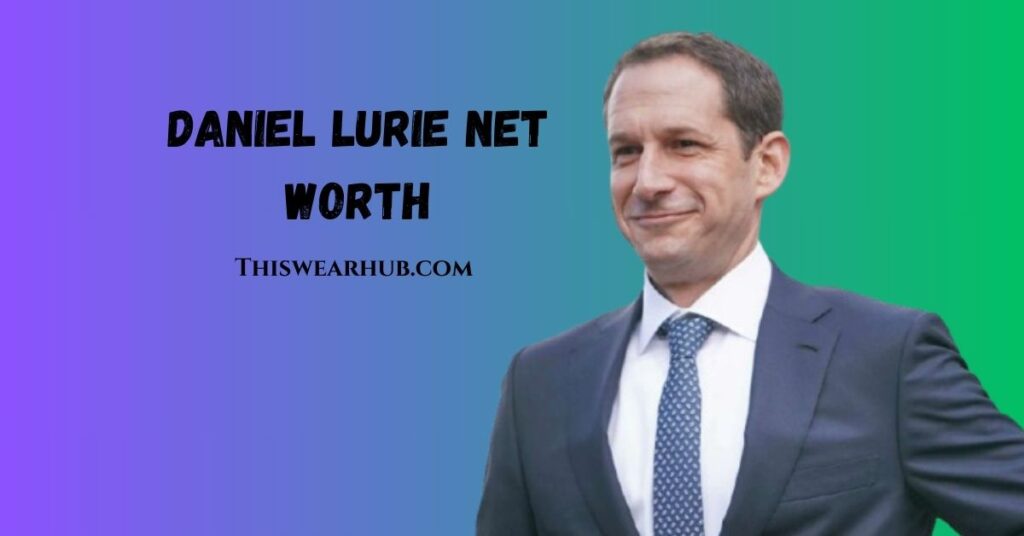Daniel Lurie is a renowned philanthropist and an entrepreneur famed for his anti-poverty and anti inequality efforts. The founder and the CEO of Tipping Point Community, a San Francisco based non profit organization, Lurie has greatly contributed to finding solutions to structural problems affecting vulnerable populations. However, parallel to his humanitarian cause, many are left wondering what are his finances like. For example, what is the daniel lurie net worth and how has he directed his finances towards the good of the society? This piece seeks to answer to the above questions by venturing into his financial portfolio and social engagements as well as the career landmarks he has accomplished.
Who Is Daniel Lurie?
Daniel Lurie, 47 years old was born in 1976 in the City of san Francisco. He comes from a reputable family history that is rooted in philanthropy as well as public service. His father, rabbi Brian Lurie was a key figure among the Jewish philanthropists in the United States, and his mother Mimi Haas is a member of the Levi Strauss clan, the leading denim company in the world. The family tie to the Levi Strauss & Co has been instrumental in the financial base of Lurie.
Lurie Tipping Community Obtained a bachelor’s degree from Duke University and a Masters in Public policy from UC Berkeley. In the year 2005 he founded Tipping Point Community with the intent to break poverty cycle in the bay area, since his family ethos instilled him with philanthropy since his childhood.
Tipping Point Community: Financial aspect overview Tipping Point Community has played a notable role in collecting and allocating $350 million to several nonprofits aimed to reduce homelessness, uplift education standards and provide jobs. Though he majorly works on facilitating we can see that due to the success of the organization his status has elevated in the industry.
After all, while Tipping Point is a nonprofit organization, it heavily relies on funds provided to them by the Technology industry leaders as well as venture capitalists, not because they are apolitical but because transparency in Tipping Point ensures efficient finances. What Lurie wants and expects is that every dollar invested has a measurable consequence, and he embodies this in his own work within Tipping Point Business too.
The Levi Strauss Connection: A Key to Wealth
As of 2023, Levi Strauss has a net worth of eight billion levi strauss & co was established in 1853. Daniel Lurie’s mother, Mimi Haas, is the heir to the levi logo which has assisted Lurie in gaining considerable family fortune alongside the Haas family without disclosing the exact amount of inheritance.
Daniel Lurie, the heir of levi’s logo is multi-millionaire and a philanthropist at the same time is privileged enough with immense resources and financial stability to indulge himself into charity work rather than wealth amasser which further assists him in the stability he craves.
Estimating daniel lurie net worth
There truly isn’t a set estimate or rate that one can descibe on daniel lurie’s fortune but an average estimation sets up a range from 50m to 200m in being the lower and upper end. All these values along with net worth estimates for lumie and his family are tied up with the levi strauss company.
Personal earnings: It can be argued that Lurie, in conjunction with his position as a director at the Tipping Point Community and serving on various boards, has various sources of income, including appeal earnings since philanthropy remains his main interest.
Investments: Given that Lurie comes from an astute financial family, it is in his best interests to invest in various asset classes such as real estate and stocks.
Daniel Lurie’s Philanthropic Ideology
Daniel Lurie considers social justice as one of the cornerstones in which his proceeds from wealth can be used. He believes that funds should be spent with the aim of facilitating other people’s endeavours. This is consistent with the commitment of Tipping Point to go beyond working towards resolving the effects of poverty to focus on addressing its various causes.
For instance, Tipping Point funds programs that:
- Facilitate the provision of the accommodation needed to tackle homelessness stigma.
- Encourage efforts to provide more resources for disadvantaged children to receive a basic education.
- Promote efforts geared towards increasing skills in order to provide employment opportunities.
- By such an integrated approach to the use of donations, they are distributed more effectively, which we can expect from Lurie’s, according to his position, business approach.
Key Career Milestones
Founding Tipping Point Community: Lurie established Tipping Point in 2005 targeting xxx amount of dollars. The large scope and impact of the organization surpasses all expectations, serving to continue enhancing Lurie’s vision for leadership within the philanthropy sphere.
Recognition and Awards: Among the honors and awards received by Lurie is one of the Time Magazine’s Philanthropy Innovators and the Jefferson Award for Public Service.
Political Ambitions: Lurie has been eager to service the public rather than just there as a businessman ever since he declared his intent in 2023 to run for the Mayor of San Francisco. In his campaign, he has made serving to correct homelessness and income inequality among his key priorities, which will make a policy oriented businessman out of him.
Financial Transparency and Accountability
One of the cardinal principles of Lurie’s leadership is financial openness. Under Lurie’s leadership, Tipping Point Community has been submitting annual reports detailing its spending and outcomes. This kind of accountability has not only nurtured the donors’ trust but has became a benchmark for other non-profits.
Such concern about accountability should also apply to Lurie’s finances, where the ethical burden and careful direction most likely dominate. This has also been critical in his sustained level of success as he is able to pursue philanthropic goals without compromising on financial ones.
Comparing Daniel Lurie to Other Philanthropists
Daniel Lurie is known for his grassroots approach to philanthropy and focus on local communities. Different from billions like Bill Gates or Warren Buffett whose outreach is global, Lurie focuses specifically on the Bay Area. This attention on a small geographical confirmation allows for a greater go-in as well as greater immediacy in impact.
But Lurie is low compared to the mega philanthropists in terms of financial worth. Although he does not have billions of funds to be spent with, he tactically spends available funds so that earlier invested dollars get maximized. This efficient action causes him to be a role model for would be philanthropists with limited financial means.
The Role of Wealth in Driving Social Change
The story of Daniel Lurie points to the possibilties that lies in use of wealth in social change. With the money at his hands and allure, he worked on large scale issues which are otherwise difficult to solve given the constraints of structural government programs. His effort makes a case for bringing together intelligence and love for social problems.
With increasing wealth gaps in the society, Luries example also resonates in the sense that wealth can be helpful. balancing financial self-sustenance while at the same time holding a commitment of giving back shows what sound wealth management can accomplish.
Conclusion
For instance, daniel lurie net worth, while it is non-negligible, is almost irrelevant because of what he has done towards the general society. He is an exemplary philanthropist, a leader and a social activist as he has put in use all his self-assets in providing over a million lives with better opportunities. From Tipping Point Community to any activity associated with civics, he is an absolute role model of what you can do when you have wealth and a good cause to strive for.
To put into context why he has some estimation of expectations to reach in terms of money is because the wealth is not where his impact ends. His wealth is in his determination to change the world aligning the boundaries of fair and unfair and that real wealth is not in what you have but in what you don’t.

